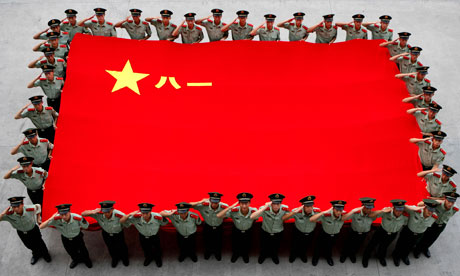
From Xinhua: China’s armed forces unswervingly implement the military strategy of active defense, guard against and resist aggression, contain separatist forces, safeguard border, coastal and territorial air security, and protect national maritime rights and interests and national security interests in outer space and cyber space. "We will not attack unless we are attacked; but we will surely counterattack if attacked." Following this principle, China will resolutely take all necessary measures to safeguard its national sovereignty and territorial integrity.
Aiming to win local wars under the conditions of informationization and expanding and intensifying military preparedness. China’s armed forces firmly base their military preparedness on winning local wars under the conditions of informationization, make overall and coordinated plans to promote military preparedness in all strategic directions, intensify the joint employment of different services and arms, and enhance warfighting capabilities based on information systems. . . .
Factors affecting social harmony and stability are growing in number, and the security risks to China’s overseas interests are on the increase. Changes in the form of war from mechanization to informationization are accelerating. Major powers are vigorously developing new and more sophisticated military technologies so as to ensure that they can maintain strategic superiorities in international competition in such areas as outer space and cyber space.
Facing a complex and volatile security situation, the People’s Liberation Army (PLA) resolutely carries out its historical missions for the new stage in the new century. China’s armed forces broaden their visions of national security strategy and military strategy, aim at winning local wars under the conditions of informationization, make active planning for the use of armed forces in peacetime, deal effectively with various security threats and accomplish diversified military tasks.
Excerpts from China’s new white paper on its armed forces. (photo: Lang Lang/Reuters) (via Daniel Keohane)
Image: reuters%204%2016%2013%20China%20cyber.jpg
